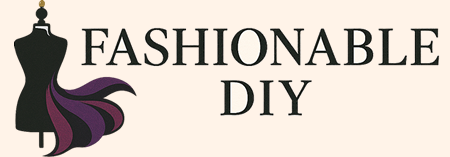The Best Fabrics for DIY Fashion Projects: Top Choices for Creativity and Comfort
Tips for Shopping at Fabric Stores
Shopping for fabric can be an exciting experience if you know what to look for and where to look. Whether you’re exploring local shops or scouring the internet, these tips will help steer you in the right direction.
Finding Quality Material
Identifying quality material is crucial for a successful DIY fashion project. We should begin by examining the fabric’s weight, texture, and weave. Fabrics from well-known stores like Joann provide a variety of swatches and samples that can help us understand how the fabric will perform in our projects.
Pay attention to the fabric’s durability. If we’re crafting a garment that requires frequent washing, choosing a fabric like denim or linen is ideal due to their longevity. For more elegant pieces, fabrics such as velvet or silk should be considered, but be mindful of their care requirements.
Exploring Local vs. Online Options
Both local and online stores have their benefits. Local stores offer the advantage of tactile feedback; we can touch and feel the fabric to assess its quality firsthand. Personalized advice from store clerks can also guide us in making the right choices. Stores like Joann often have knowledgeable staff who can provide insights on the latest trends and best materials for specific projects.
Online shopping, on the other hand, offers a broader selection and the convenience of shopping from home. Websites often provide detailed fabric descriptions, customer reviews, and even tutorials. Exploring platforms like eBay can unearth unique finds and discounted remnants that we might not find in local stores. Just be sure to carefully read descriptions and reviews to ensure the fabric meets our expectations.
Customization and Personalization Strategies
In the realm of DIY fashion projects, customization and personalization are key to creating unique apparel that stands out. By exploring print and pattern alterations along with adding embellishments, we can transform basic fabrics into personalized pieces.
Adding Unique Prints and Embellishments
Incorporating unique prints into our projects can significantly elevate the final product. For example, screen printing or fabric painting lets us create custom designs, be it florals, geometrics, or abstract art. These techniques allow us to infuse personal style into our garments.
Embellishments such as embroidery, patches, and beads further enhance the texture and visual appeal of our projects. By selecting specific motifs or themes for embroidery, we can weave personal stories into our apparel. Patches can signal affiliations or simply add a playful touch, while beads can introduce a touch of glamour. Each addition helps differentiate our DIY creations from store-bought clothing, ensuring our projects are truly one-of-a-kind.
Altering Patterns for Fit and Style
Altering patterns is another crucial strategy for personalization. By tweaking standard patterns, we can achieve a better fit or create design details that reflect our style preferences. Simple changes like adjusting the length of sleeves or hem, taking in the sides for a more fitted look, or adding darts for shaping can make a significant difference.
For those who enjoy upcycling, repurposing old garments into new designs allows for endless creativity. Turning a vintage dress into a modern top or transforming a pair of jeans into a stylish skirt can breathe new life into forgotten pieces. By mastering these alterations, we can ensure our handmade apparel not only fits well but also expresses our unique fashion sensibilities.
Ethical and Sustainable Sewing Practices
Incorporating ethical and sustainable practices into our sewing routines helps reduce waste while promoting a more responsible way to create fashion.
Using Recycled and Organic Fabrics
Choosing recycled and organic fabrics is a pivotal step. Eco-friendly materials like organic cotton, hemp, bamboo, and Tencel are excellent options. Organic cotton, for example, is grown without harmful pesticides, reducing environmental impact. Hemp and bamboo are renewable resources requiring less water than conventional fabrics. Meanwhile, Tencel, made from eucalyptus wood pulp, uses a closed-loop production process, minimizing waste.
We can also upcycle old clothing or repurpose fabric scraps. This reduces the need for new materials and gives a second life to textiles that might otherwise end up in landfills.
Mindful Crafting and Zero Waste Techniques
Mindful crafting involves focusing on reducing waste at every stage of our projects. Practicing zero-waste techniques is a key aspect. Using fabric scraps for smaller projects like patchwork or accessories can minimize leftover materials. We can also plan our cutting layouts efficiently to make the best use of fabric.
Investing in high-quality tools and sewing machines ensures durability and reduces the frequency of replacements. Furthermore, we should be conscious of using less synthetic fabrics, as they release microplastics into the environment. Instead, opting for biodegradable fabrics ensures a lighter ecological footprint.



